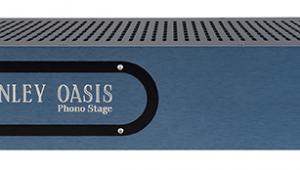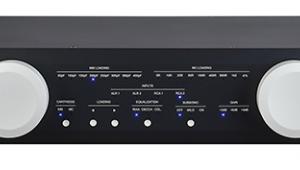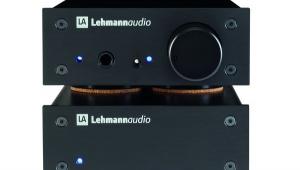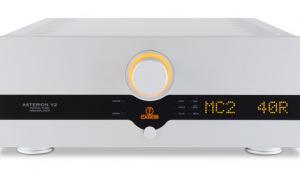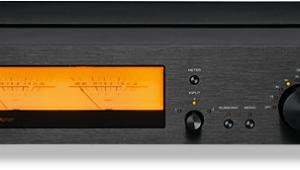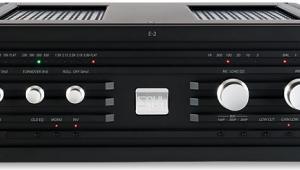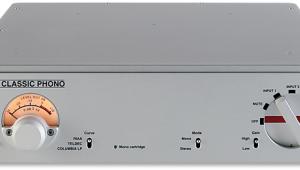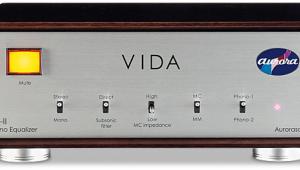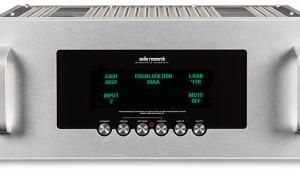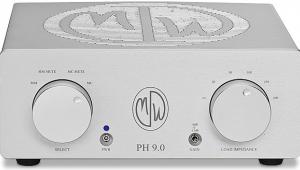PrimaLuna EVO 100 Tube Phono Preamplifier
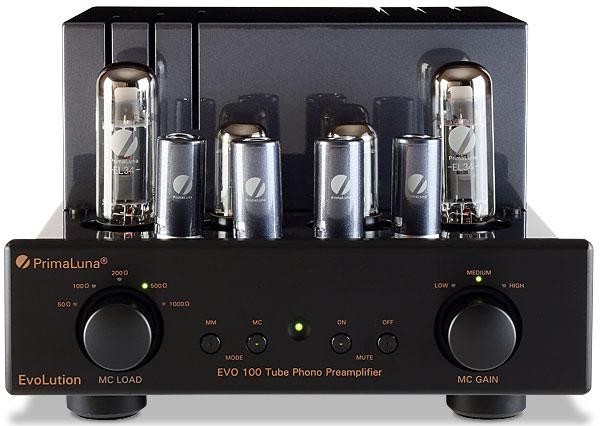
 Dutch tube aficionado, PrimaLuna, has offered an optional solid-state phono module with its amps for years, but now comes its first standalone, all-tube MM/MC preamp
Dutch tube aficionado, PrimaLuna, has offered an optional solid-state phono module with its amps for years, but now comes its first standalone, all-tube MM/MC preamp
With vinyl sales now surpassing CD, the revival is back with such force that the flood of phono stages and decks will surely continue unabated. More than that, it's enough for PrimaLuna to show its confidence in analogue to bring out its first EVO phono amp, the EVO 100 Tube Phono Preamplifier at £3398.
It's clear this unit is aimed at seasoned vinyl users, smack in the price range of 'second or third upgrade' where one expects a full complement of features and facilities, even from a genuinely 'all-tube' design hosting no fewer than ten valves. Around the back are just two sets of RCAs, one for input and one for output, plus a 3-pin IEC mains socket, fuse and earthing post. On the lefthand side is a rocker for power on/off, while on the right is one for selecting two levels of MM capacitance: 47pF or 100pF. Pure simplicity…
Making Gains
On the front panel, a rotary provides five wisely chosen MC loads of 50, 100, 200, 500ohm and 1kohm. I realise that in a perfect world there would be infinitely variable impedance selection, but you'd be hard-pressed to find cartridges this cannot match. Expanding this, though, is a knob on the right choosing low, medium or high gain. The MM section is specified at 40dB, while the MC settings up this to 52dB, 56dB, and 60dB. Between the rotaries are soft-touch buttons selecting MC or MM cartridges and mute. The EVO 100 Phono has a proprietary 'SoftStart' warm-up stage with a time of around one minute, ensuring no nasty thumps through the system.
Physically, this 12kg unit is imposing for a phono stage, closer in presence to models like the 19in rack-mount types, including EAR/Yoshino's 912 or Audio Research's full-width phono amps [HFN Dec '16]. It's made from heavy-gauge steel, which is fully vented so it never seems to run hot despite the valve complement of two 5AR4s for power supply rectification, two EL34s for power supply stabilisation, and four 12AX7s for the MM section, all contained under the curved glass-and-metal cage. A brace of 6922s for the MC stage is hidden away in the back, accessible via a small panel. This is good news for enthusiasts; I am certain PrimaLuna fitted decent glassware, but there will be hobbyists who can't resist tampering. Every one of the chosen types is common, so knock yourself out with, say, NOS Brimars or Mullards or whatever tickles your fancy.

PrimaLuna's look is now familiar, with a narrow but deep footprint, and the chassis boasts five coats of hand-rubbed, polished paint and a brushed fascia in black(ish) or silver. Inside, it's all point-to-point wiring, and the rotaries have a fabulous feel and scroll, landing on each setting with a 'click'. Also to please the fastidious are ceramic valve bases, Nichicon and DuRoch capacitors and gold-plated sockets.
Fortunately, I didn't have to test the PTP (Power Transformer Protection) circuit, which reacts if the power transformer overheats due to environmental circumstances, overloading or other issue. For peace of mind for nervous types, an internal thermal switch breaks the primary. After it's cooled, and if nothing is amiss, the EVO 100 Tube Phono preamp will 'repower' and function properly.
Room For One More?
One line in PrimaLuna's pitch bothered me, however, given that this is not a basic, minimalist nor economy-priced model. It states that, 'The starting point in designing this model was to keep the controls and features as specific as possible – no special features for only a select number of users'. This compels me to voice two observations, even if it causes PrimaLuna founder Herman van den Dungen to commission a voodoo doll of me to pierce with needles.
The first is that, considering its price, complexity and size, installing two sets of inputs should not have troubled PrimaLuna one iota. Many heavy users of LPs own two decks, while turntables fitted with two arms are an even better, space-saving solution for those with multiple cartridges.
As for the second, it's the fitting of a volume control and variable output. This would have turned the EVO 100 into a perfect, dedicated control unit for someone who only uses vinyl. I have a sub-£1000 Pro-Ject phono stage with two sets of inputs and outputs, while EAR-Yoshino's PhonoBox [HFN Dec '19], under £2000, has an output level control. It can be done…
![]() T-Rex Appeal
T-Rex Appeal
Enough of my grumbling because the sound is – like the DeVore O/93 speakers [HFN Mar '23] – a delightful taste of the time when dinosaurs and LPs roamed the earth. From the get-go, I was awash with the kind of lushness which, on the most basic level, has been the distinguishing character trait which separates analogue from digital. Irrespective of the albums I played, including One-Steps with digital stages, the experience was 'vintage' – but in a good way.

